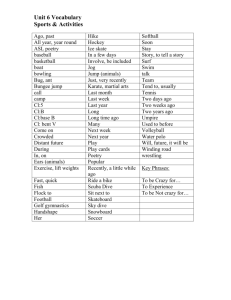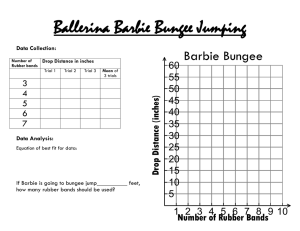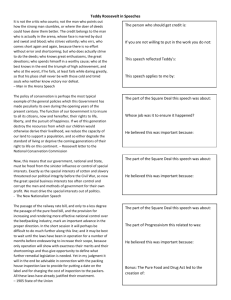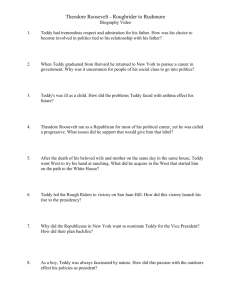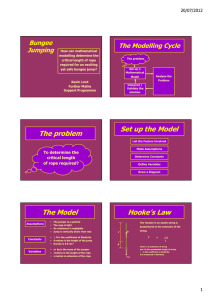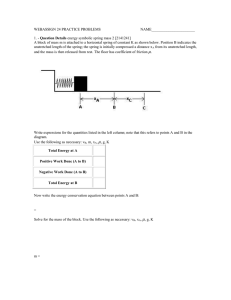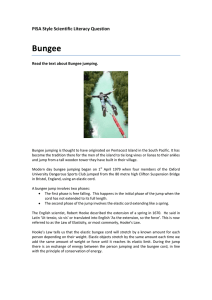Teddy Goes Bungee Jumping
advertisement
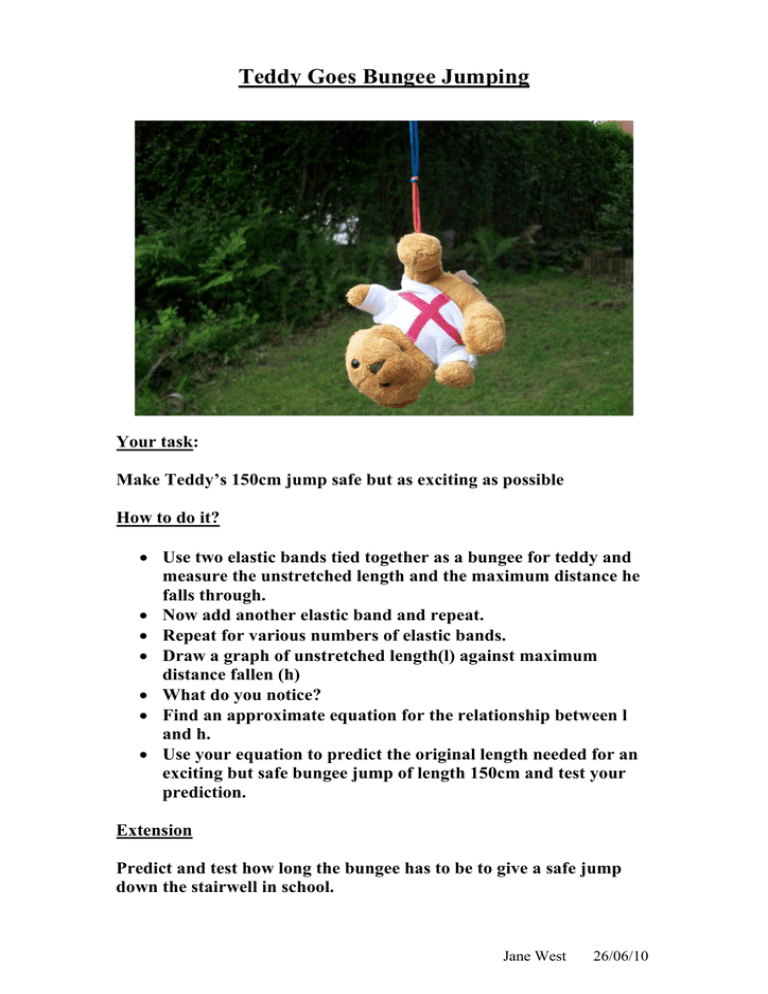
Teddy Goes Bungee Jumping Your task: Make Teddy’s 150cm jump safe but as exciting as possible How to do it? • Use two elastic bands tied together as a bungee for teddy and measure the unstretched length and the maximum distance he falls through. • Now add another elastic band and repeat. • Repeat for various numbers of elastic bands. • Draw a graph of unstretched length(l) against maximum distance fallen (h) • What do you notice? • Find an approximate equation for the relationship between l and h. • Use your equation to predict the original length needed for an exciting but safe bungee jump of length 150cm and test your prediction. Extension Predict and test how long the bungee has to be to give a safe jump down the stairwell in school. Jane West 26/06/10 Teddy Goes Bungee Jumping – Teacher Notes Firstly: Explain the problem and ask for ideas of how to solve it before giving the worksheet. Hints: • If you use a small teddy you will have to add some mass. I put a mass down his t-shirt! • Carry out the experiment yourself first to make sure you get sensible results with the equipment you use. Results Here is my data for reference l(cm) 10 15 22 29 34 h(cm) 28 38 50 67 76 h (cm) teddy's jumps 100 80 60 40 20 0 y = 2.02x + 7.40 Series1 Linear (Series1) 0 20 40 60 l (cm) Using the equation of the line gives the natural length required for a 150cm jump to be 70.6cm (to 1d.p.). In fact, this gave a dangerous jump (i.e. too long!) but 69cm was just about right.
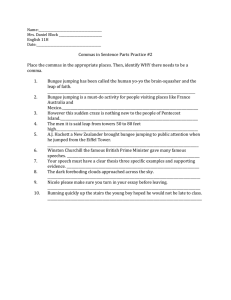
![[Scripts] BUNGEE JUMPING](http://s2.studylib.net/store/data/027207962_1-03d34c174fe19cdbdcb0e617329dfcaa-300x300.png)
